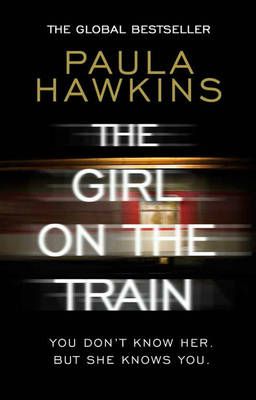
The Girl on the Train, a debut novel by British journalist Paula Hawkins, was a huge global success when it was published in January 2015. The book was at number 1 on the New York Times best seller list for 13 consecutive weeks and to date has sold over 16 million copies worldwide. A big budget Hollywood movie of the story, starring Emily Blunt, was released in October 2016.

I finally got round to reading The Girl on the Train in February 2019. I found the style most unusual and, initially at least, difficult to read. The entire story is told in the present tense, first person, from the point of view of three different women - Rachel (the main protaganist), Megan and Anna. Not only that, the timelines of the three different narrations are not simultaneous - Rachel and Anna's stories are now, but Megan's starts about a year before (but still in the present tense). Each chapter is given the title of the narrator of that chapter, so when you see "Megan" (say) at the head of a chapter and the narration begins with something like "I open the front door and step outside" then you know it is Megan's point of view you are reading.
All three women are flawed characters, none more so than Rachel - she is a depressed, overweight, obsessive alcoholic with an all-consuming desire to be a mother. Rachel was unable to have children while married, so she began drinking heavily and consequently destroyed her own marriage and lost her job. She still loves her divorced husband (Tom, who by now is happily married to Anna) and the mere sight of another woman with a child can reduce her to a tearful, blubbering wreck. She rents a room from a friend but is so ashamed of having been fired from her job that she still takes the train into London every day, pretending to go to work.
So with such an unusual style and a main protaganist that is not at all likeable (in fact, she is downright pathetic), it's little wonder that I found the book hard to read ... but I persevered and eventually (more than half way through the book) the intrigue of what happens in the plot finally grabbed me. I enjoyed reading the second half of the story, but it isn't a book that I would ever read again. I suppose the fact that all the main characters are women and the author is a woman probably means that the book is more likely to be enjoyed by women ...
 © Paul Kilfoil, Cape Town, South Africa
© Paul Kilfoil, Cape Town, South Africa